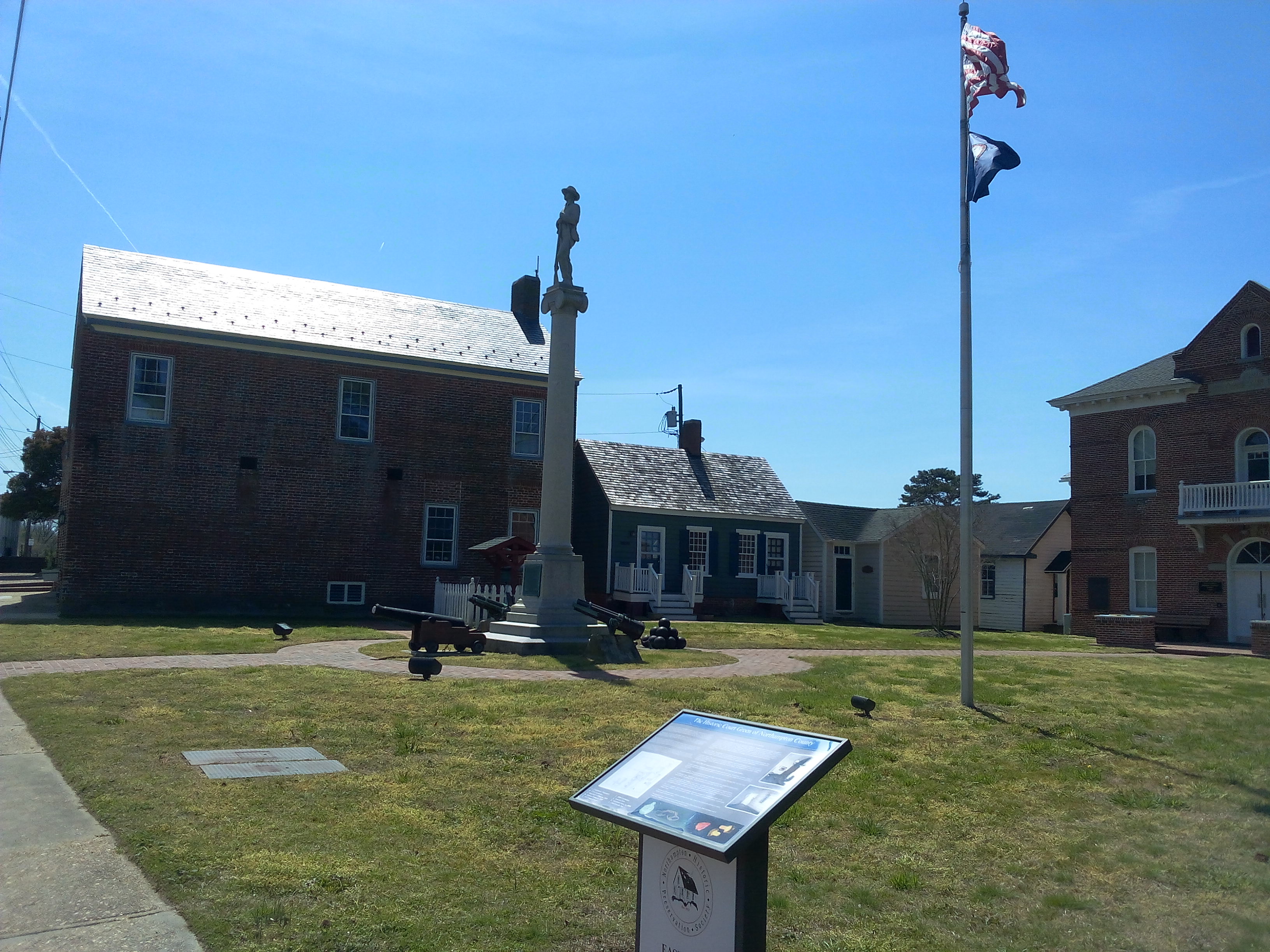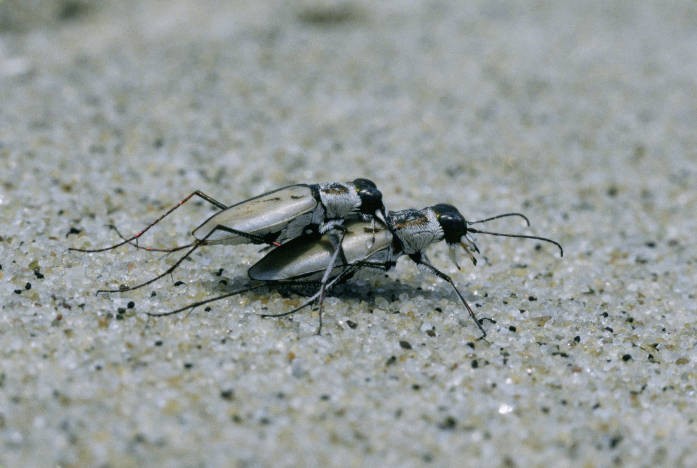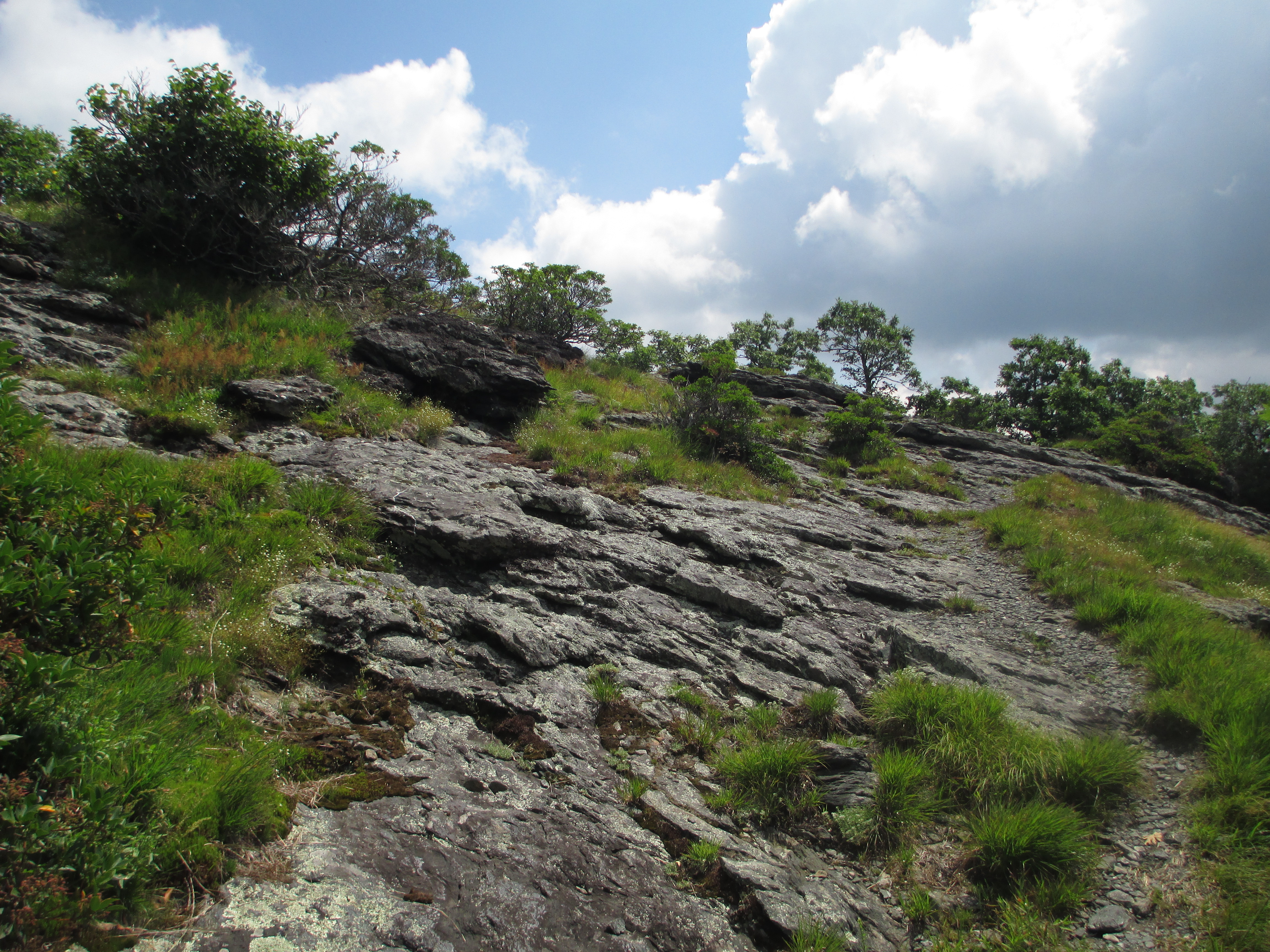|
Savage Neck Dunes Natural Area Preserve
Savage Neck Dunes Natural Area Preserve is a Natural Area Preserve located in Northampton County, Virginia on the Chesapeake Bay. dunes within the preserve are among the highest points on Virginia's Eastern Shore. The preserve contains beach, dune, and maritime forest natural communities of various sorts, as well as habitat for migratory songbirds and northeastern beach tiger beetles. Regionally rare plants at the preserve include Engelmann's umbrella-sedge ('' Cyperus engelmannii''), dwarf burhead ('' Echinodorus tenellus''), and southern bladderwort (''Utricularia juncea''). The preserve is owned and maintained by the Virginia Department of Conservation and Recreation, and is open to the public. Improvements at the site include three trails that have been marked off for hiking, and there is a small public parking area near the entrance. See also * List of Virginia Natural Area Preserves References External linksVirginia Department of Conservation and Recreation: Savage ... [...More Info...] [...Related Items...] OR: [Wikipedia] [Google] [Baidu] |
Northampton County, Virginia
Northampton County is a county located in the Commonwealth of Virginia. As of the 2020 census, the population was 12,282. Its county seat is Eastville. Northampton and Accomack Counties are a part of the larger Eastern Shore of Virginia. The county is the center of the late Eocene meteor strike that resulted in the Chesapeake Bay impact crater. The Northampton County Courthouse Historic District is part of the Eastville Historic District at the county seat. History When English colonists first arrived in the area in the early 1600s, the Virginia Eastern Shore region was governed by Debedeavon (aka "The Laughing King"), who was the paramount chief of the Accomac people, which numbered around 2,000 at the time. The former name of the county was Accomac Shire, one of the original eight shires of Virginia after the founding of the first settlement at Jamestown in 1607. In 2010, the name was changed to Northampton County by the colonists. In 1663, Northampton County was s ... [...More Info...] [...Related Items...] OR: [Wikipedia] [Google] [Baidu] |
Cicindela Dorsalis
''Habroscelimorpha dorsalis'', commonly known as the eastern beach tiger beetle, is a species of flashy tiger beetle in the family Cicindelidae. It is found in Central America and North America. Description The body length is . The head and thorax are bronze-green, the legs are long and slender, and the elytra are white to light tan with narrow bronze markings. The head has long antennae, large compound eyes, and powerful jaws. There are white hairs on the pronotum and the sides of the abdomen. The pale coloration provides camouflage for the beetle on the light sand. The larvae are grub-like, with long, segmented bodies and large jaws similar to those of adults. ''Habroscelimorpha dorsalis dorsalis'', commonly known as the Northeastern beach tiger beetle, is the largest subspecies of ''Habroscelimorpha dorsalis''. In 2012, the subgenus ''Habroscelimorpa'' was reclassified to the genus level Fitting to its name, the Northeastern beach tiger beetle is found along the north-easter ... [...More Info...] [...Related Items...] OR: [Wikipedia] [Google] [Baidu] |
Virginia Natural Area Preserves
The Virginia Natural Area Preserve System is a system of protected areas in the state of Virginia. It is managed by the Virginia Department of Conservation and Recreation. , there are sixty-six (66) dedicated preserves in Virginia, containing examples of some of the rarest natural communities in the state; in addition, many serve as a home for locally, nationally, and globally rare species. History In 1986, the Virginia Natural Heritage Program was formed through a cooperative agreement between the Commonwealth of Virginia and The Nature Conservancy. In 1988 the program was placed under the control of the Virginia Department of Conservation and Recreation (DCR). To further the Natural Heritage Program's mission to conserve and manage sites identified as significant natural areas within the state, The Virginia Natural Area Preserve System was established in 1989. The system's first preserve, North Landing River Natural Area Preserve, was established in 1990. By 2007, the preserve ... [...More Info...] [...Related Items...] OR: [Wikipedia] [Google] [Baidu] |
List Of Virginia Natural Area Preserves
The Virginia Natural Area Preserve System is a system of protected areas in the state of Virginia. It is managed by the Virginia Department of Conservation and Recreation. , there are sixty-six (66) dedicated preserves in Virginia, containing examples of some of the rarest natural communities in the state; in addition, many serve as a home for locally, nationally, and globally rare species. History In 1986, the Virginia Natural Heritage Program was formed through a cooperative agreement between the Commonwealth of Virginia and The Nature Conservancy. In 1988 the program was placed under the control of the Virginia Department of Conservation and Recreation (DCR). To further the Natural Heritage Program's mission to conserve and manage sites identified as significant natural areas within the state, The Virginia Natural Area Preserve System was established in 1989. The system's first preserve, North Landing River Natural Area Preserve, was established in 1990. By 2007, the preserve ... [...More Info...] [...Related Items...] OR: [Wikipedia] [Google] [Baidu] |
Utricularia Juncea
''Utricularia juncea'', the southern bladderwort, is a small to medium-sized, probably perennial carnivorous plant that belongs to the genus ''Utricularia''. ''U. juncea'' is native to Central, South, and North America. It grows as a terrestrial plant in marshes, swamps, and pools in shallow waters, mostly at lower altitudes. It was originally described and published by Martin Vahl in 1804.Taylor, Peter. (1989). ''The genus Utricularia - a taxonomic monograph''. Kew Bulletin Additional Series XIV: London. Synonyms *''Personula grandiflora'' Raf. *''Stomoisia juncea'' (Vahl) Barnhart *''S. virgatula'' (Barnhart) Barnhart *''Utricularia angulosa'' Poir. *''U. cornuta'' var. ''michauxii'' Gomez *''U. juncea'' f. ''minima'' S.F.Blake *''U. juncea'' f. ''virgatula'' (Barnhart) Fernald *''U. personata'' Leconte ex Elliott *''U. sclerocarpa'' Wright Wright is an occupational surname originating in England. The term 'Wright' comes from the circa 700 AD Old English word 'wryhta' o ... [...More Info...] [...Related Items...] OR: [Wikipedia] [Google] [Baidu] |
Echinodorus Tenellus
''Helanthium tenellum'', the pygmy chain sword, is a species of plants in the Alismataceae. It is native to the eastern United States (from Texas to Florida, north to Michigan and Massachusetts), southern Mexico (Chiapas, Veracruz), West Indies (Cuba, Jamaica, Hispaniola), Central America, South America (from Guyana to Argentina) Description The leaves of ''H. tenellum'' are narrowly elliptical or lanceolate. At different times during the plant's life cycle, the blade of the leaf is scarcely distinguishable from the petiole, while at other times the petiole is 10 to 15 times as long as the blade, which may be 1–4 cm long and 0.2–1 cm wide, with a pointed tip. The base is decurrent to the petiole and has between one and three veins. The stem is thin, erect, often curved, and may be 3–20 cm long. In small plants, the stem ends in a single inflorescence (umbel or coil); in larger plants the inflorescence is racemose, composed of two whorls placed one above the ... [...More Info...] [...Related Items...] OR: [Wikipedia] [Google] [Baidu] |
Cyperus Engelmannii
''Cyperus odoratus'' is a species of sedge known by the common names fragrant flatsedge and rusty flatsedge. This species is quite variable and may in fact be more than one species included under one name. Description In general this is an annual plant approaching half a meter in height on average but known to grow much taller. It usually has some long, thin leaves around the base. The inflorescence is made up of one to several cylindrical spikes attached at a common point. Each of the spikes bears a large number of flat, oval-shaped spikelets. Each spikelet is usually light brown to reddish-brown and has a few to over 20 flowers. Each flower is covered by a tough, flat bract with a visible midvein. The fruit is a flat achene less than two millimeters long. Distribution and habitat This plant can be found in much of the tropical and warm temperate world, including South, Central, and North America, Southeast Asia, some Pacific Islands, Australia, New Guinea New Guine ... [...More Info...] [...Related Items...] OR: [Wikipedia] [Google] [Baidu] |
Cyperus
''Cyperus'' is a large genus of about 700 species of sedges, distributed throughout all continents in both tropical and temperate regions. Description They are annual or perennial plants, mostly aquatic and growing in still or slow-moving water up to deep. The species vary greatly in size, with small species only tall, while others can reach in height. Common names include ''papyrus sedges'', ''flatsedges'', ''nutsedges'', ''umbrella-sedges'' and ''galingales''. The stems are circular in cross-section in some, triangular in others, usually leafless for most of their length, with the slender grass-like leaves at the base of the plant, and in a whorl at the apex of the flowering stems. The flowers are greenish and wind-pollinated; they are produced in clusters among the apical leaves. The seed is a small nutlet. Ecology ''Cyperus'' species are eaten by the larvae of some Lepidoptera species, including ''Chedra microstigma''. They also provide an alternative food source for ... [...More Info...] [...Related Items...] OR: [Wikipedia] [Google] [Baidu] |
Songbird
A songbird is a bird belonging to the suborder Passeri of the perching birds (Passeriformes). Another name that is sometimes seen as the scientific or vernacular name is Oscines, from Latin ''oscen'', "songbird". The Passeriformes contains 5000 or so speciesEdwards, Scott V. and John Harshman. 2013. Passeriformes. Perching Birds, Passerine Birds. Version 06 February 2013 (under construction). http://tolweb.org/Passeriformes/15868/2013.02.06 in The Tree of Life Web Project, http://tolweb.org/ ccessed 2017/12/11 found all over the world, in which the vocal organ typically is developed in such a way as to produce a diverse and elaborate bird song. Songbirds form one of the two major lineages of extant perching birds (~4000 species), the other being the Tyranni (~1000 species), which are most diverse in the Neotropics and absent from many parts of the world. The Tyranni have a simpler syrinx musculature, and while their vocalizations are often just as complex and striking as thos ... [...More Info...] [...Related Items...] OR: [Wikipedia] [Google] [Baidu] |
Virginia
Virginia, officially the Commonwealth of Virginia, is a state in the Mid-Atlantic and Southeastern regions of the United States, between the Atlantic Coast and the Appalachian Mountains. The geography and climate of the Commonwealth are shaped by the Blue Ridge Mountains and the Chesapeake Bay, which provide habitat for much of its flora and fauna. The capital of the Commonwealth is Richmond; Virginia Beach is the most-populous city, and Fairfax County is the most-populous political subdivision. The Commonwealth's population was over 8.65million, with 36% of them living in the Baltimore–Washington metropolitan area. The area's history begins with several indigenous groups, including the Powhatan. In 1607, the London Company established the Colony of Virginia as the first permanent English colony in the New World. Virginia's state nickname, the Old Dominion, is a reference to this status. Slave labor and land acquired from displaced native tribes fueled the ... [...More Info...] [...Related Items...] OR: [Wikipedia] [Google] [Baidu] |
Natural Communities
In ecology, a community is a group or association (ecology), association of Population ecology, populations of two or more different species occupying the same geographical area at the same time, also known as a biocoenosis, biotic community, biological community, ecological community, or life assemblage. The term community has a variety of uses. In its simplest form it refers to groups of organisms in a specific place or time, for example, "the fish community of Lake Ontario before industrialization". Community ecology or synecology is the study of the interactions between species in communities on many spatial and temporal scales, including the distribution, structure, abundance, demography, and biological interaction, interactions between coexisting populations. The primary focus of community ecology is on the interactions between populations as determined by specific genotypic and phenotypic characteristics. Community ecology also takes into account Abiotic components, abi ... [...More Info...] [...Related Items...] OR: [Wikipedia] [Google] [Baidu] |




